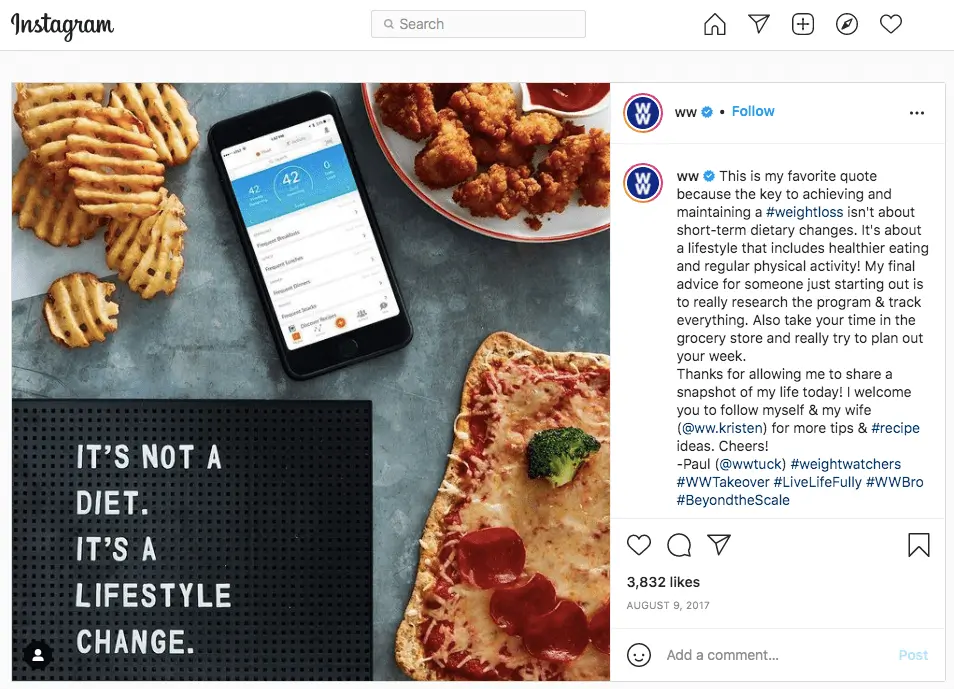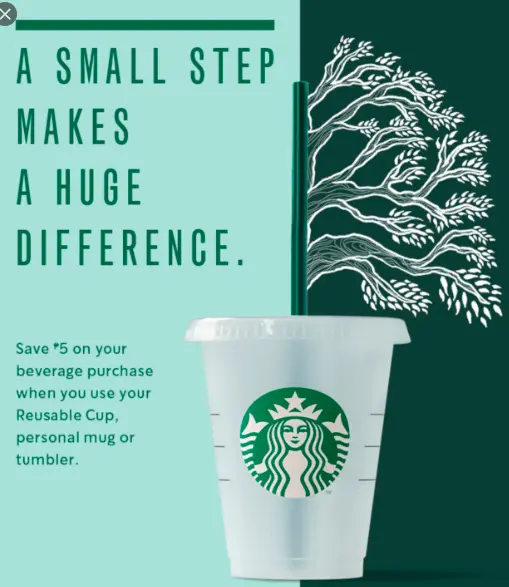Marketers have long sought ways of understanding what their customers are thinking. After all, just imagine how much easier it would be to sell your products and services if you could predict people’s passions, fears, likes, and dislikes. Some see this sort of knowledge as the holy grail of marketing. Others, meanwhile, think of it as akin to the alchemist’s doomed dream of turning lead into gold. How could we ever possibly read people’s minds?
While mind-reading may be firmly in the realm of science fiction, marketers have a pretty reasonable substitute, and that’s psychographics.‘Psycho-what-now?’ we hear you ask! Fear not, because in this post, we’ll answer all your questions. When you’re done, you’ll know exactly what psychographics are and how they’re being used to transform and target digital marketing to a degree of accuracy that was once unheard of.
We’ll cover:
- What are psychographics? A definition
- What’s the difference between psychographics and demographics?
- What role do psychographics play in digital marketing?
- What are some examples of psychographics in marketing?
- How to gather psychographic data
- Psychographic marketing: How to use psychographics to improve your digital marketing strategy
- Key takeaways
Ready to find out what psychographics are and how to use them in your digital marketing strategy? Let’s go.
1. What are psychographics? A definition
Psychographic profiling is used by marketers and psychologists to determine a person’s psychological behaviors and motivations. Psychographics work by aggregating data on an individual’s activities, interests, and opinions (AIO).
In marketing-speak, ‘AIO’ is a catch-all for psychographic measurements. More specifically, this umbrella captures any number of other descriptors, from somebody’s political views and value systems to their likes, dislikes, lifestyle choices, and general attitudes to current social trends.
When used effectively, psychographic profiling gives digital marketers unprecedented insight into consumer buying habits. In turn, this allows them to create much more targeted marketing campaigns. This is great for businesses (it means less time and money spent on low-success mass marketing) and better for consumers (as it means fewer irrelevant, nuisance ads, and more direct access to products and services they need).
Where does the term ‘psychographics’ come from?
Although the term psychographics sounds like the latest digital marketing buzzword, it’s actually been around a lot longer than you might think. The term was first coined in 1965 by market researcher Emanuel Demby. The first psychographic approaches were pursued in earnest in the 1970s.
Even then, there was an understanding that demographic data alone did not provide marketers with the insights they needed to help consumers connect with the right products and services. However, it’s only with relatively recent technological advances (in particular, the explosion of big data) that psychographics have really taken off.
2. What’s the difference between psychographics and demographics?
Hold up a second. We know what you’re thinking…You’ve heard of demographics before. Is that the same thing as psychographics? The short answer is no. While the two are related, they are not the same thing. So what’s the difference?
In short, demographics describe who consumers are, while psychographics explain why they behave the way that they do.
Let’s explore the two further.
Demographics
Demographics rely on general facts about people, such as where they live, their gender, their age, relationship status, and so on. This is all useful information for building a generalized picture of a group of individuals who share certain demographic traits. However, it doesn’t get into individual details. While members of a particular demographic group share certain qualities, that doesn’t mean they are identical. There will still be significant differences between them.
Psychographics
By compiling people’s cognitive and emotional data, psychographics fill the gaps that demographics cannot. They answer questions like: What are someone’s musical tastes? What are their family values? What are their views on particular social causes? Do they like animals? The answers to these questions can be used to create accurate psychological profiles that describe how a person thinks, feels, and acts. With these motivations and personality traits pinned down in more detail, digital marketers can learn why people behave the way they do and buy the things they do.
Psychographic data vs. demographic data
At the core of both psychographics and demographics is data. The difference lies in what types of data they use. So, exactly which types of data are psychographic and which are demographic?
Demographic data
Demographic data largely (though not entirely) comprises quantitative measures (or, at least, data that can be quantified and represented by a number). Demographic data includes:
- Age
- Gender
- Location
- Race
- Education
- Income
- Marital status
- Religion
Psychographic data
Psychographic data comprises qualitative measures (i.e. data that describes things) and includes:
- Personality traits (i.e. openness, conscientiousness, extroversion, agreeableness, and neuroticism)
- Opinions (e.g. ‘I think Jay’s great but I’m not a fan of Kacen’)
- Lifestyle choices (e.g. ‘I’m vegan and drive an SUV’)
- Interests (e.g. ‘I enjoy knitting and death metal’)
- Daily activities (e.g. ‘I get a coffee and a cronut every morning on the way to work’)
- Values (e.g. ‘I put family above all else’)
While these aren’t exhaustive examples, they do highlight just how much more detail psychographics provide than demographics. Alongside behavioral and geographic data (two other measures that are closely related to demographics and psychographics) we can use these data to create customer segments, as we’ll see in the next section.
3. What role do psychographics play in digital marketing?
Psychographic profiles aren’t limited to digital marketing. They’re used in any field that requires an understanding of what makes people tick, from public health policy to law enforcement. However, digital marketing is one of the most common fields in which these data are used. But how, exactly?
While all marketers have different goals, psychographics play an invaluable role in enhancing customer segmentations. These can be used to inform digital marketing activities.
Understanding psychographics and customer segmentation
To understand their target audience, digital marketers have long used customer segments (or high-level categories for groups of people) to inform their strategies.
Historically, segmentations were constructed using demographic data sometimes combined with behavioral data (i.e. a customer’s activities) and geographic data (i.e. where they’re located or carry out their activities). In this case, a customer buyer profile might read something like:
‘Imani is thirty years old and lives in Michigan. She earns $40,000 a year, is married, and has two children. She shops at Sears and Bloomingdale’s.’
While this information helps marketers determine Imani’s social class and shopping habits, it doesn’t tell the whole story. Combining it with psychographic data, however, allows for a more nuanced segmentation that marketers can use to sharpen their campaigns. For instance:
‘Imani is a millennial, a vegan, and a climate activist. She likes sustainable health and beauty products. She watches science videos on YouTube and engages least positively with social media posts about alternative medicines or fringe healthcare.’
Using this additional information, a marketer can glean targeted insights about Imani’s interests and lifestyle that her demographic, geographic, or behavioral data alone cannot provide. Using all four in conjunction, marketers can create far more accurate segments and buyer personas (representative models of the ‘ideal’ customer). In turn, these allow for more tailored marketing and (in theory!) better conversion rates.
Ways in which psychographic data improve digital marketing
Customer segments built using psychographic data can inform many digital marketing activities. They can help with:
- Context-specific content for your website or blog
- Super-targeted landing pages, e.g. tailored product details pages
- Reader-focused headlines for email shots (improving clickthrough rate)
- Different ads for the same product but using different approaches depending on the target audience
- Personalized checkout messages on e-commerce sites
- Rebranding exercises
- Promoting new product lines
The possibilities go on but you get the idea. We’ll explore some of these in more detail in section six. Whatever the approach, though, the benefits of psychographics all come down to the incredible detail that they provide. Next up, let’s contextualize all this with some examples.
4. Psychographic marketing examples
Now we know what psychographics are, how do they look in action? In this section, we highlight three examples of companies that are using psychographics to their advantage.
1. WW (formerly Weight Watchers): Rebranding
Weight Watchers became famous in the 70s and 80s for its personalized dieting program. And for decades, it served a demographic group comprising largely of cis-gendered women (85% in the US). Taking into account other demographic factors (like age) their target audience was just 3.5% of the US population.
For a long time, that was fine for Weight Watchers’ needs. However, around 2015, they found that their subscriber numbers were dropping. To investigate the problem, they adopted psychographics. Once they did, they found that many US adults—not just older, cis-gendered women, but also many men and young people—wanted to eat more healthily and maintain more balanced diets. However, these groups were turned off by Weight Watcher’s ‘dieting’ label and general branding.

Source: instagram.com
Using these psychographic insights, in 2018, Weight Watchers rebranded as WW, moving away from dieting toward general health, fitness, and wellbeing. Launching new products and messaging, the company now targets a younger generation of customers and has a more diverse gender mix, too. Targeting those who are interested in healthy eating and exercise (instead of those who merely want to lose weight) the brand is appealing to a whole new audience and experiencing a resurgence. All thanks to psychographics!
2. Starbucks: Targeted advertising
Starbucks coffee is popular all around the world. The company doesn’t rest on its laurels, though—they’re renowned for using psychographics in everything from their store layout and app design to their highly-targeted digital marketing. Just look at these two ads. Ultimately, they’re selling the same thing: coffee. But while one focuses on the joy of coffee (the quality, the sense of personal well-being) the other addresses its environmental impact.


Source: starbucks.com / pinterest.com
The first ad is targeted at coffee connoisseurs—those who value the quality of the drink. Meanwhile, the latter targets those who value the company’s green credentials. This is no accident. Both ads will have been created using psychographic segmentation and targeted at different groups on social media or elsewhere.
3. Adidas: New product lines
Many high street brands use psychographics and the clothing company Adidas is no exception. In combination with demographic and behavioral data, psychographics have helped them target various products with exceptional precision. For instance, psychographics have helped Adidas find that their performance products are more popular with sports lovers and those who consider themselves outdoorsy types.

Source: BFA, Owen Kolas / mensjournal.com
Adidas hasn’t stopped with insights into existing product lines, though. As early adopters of psychographics, they’ve been able to design entirely new product lines that align with consumer personalities, behaviors, and interests. For example, using psychographic data, they learned that many consumers valued products deemed to be fashionable and exclusive. As a direct result, Adidas developed the Y-3 high fashion line and the Adidas Originals brand. This is also why nobody bats an eyelid when Adidas—a high street brand—now appears in trendy fashion shows. It’s all part of the strategy!
5. How to gather psychographic data
Collecting psychographic data used to be more complex than other types of data collection. These days, though, with so much data accessible online, it’s often simply a case of purchasing a dataset from a market research company or scraping insights from the web.
The most common digital sources of psychographic data include:
- Social media (likes, posts, comments, retweets, etc.)
- Online quizzes (think BuzzFeed’s ‘Which Harry Potter character are you?’ type thing!)
- General browsing data (the websites people visit tell us a lot about their interests)
- Your company’s website analytics
- Internal databases (spreadsheets or customer relationship management systems)
Online and digital sources make psychographic data collection much easier than it was in, say, the 1970s. Nevertheless, offline techniques are still effective. Although more time-consuming, they’re usually worth the effort due to the higher quality of the insights they provide. Common (non-digital) sources of psychographic data include:
- Surveys
- Personal interviews
- Focus groups
- Third party data
- Market research companies
Whatever the source, there are plenty of psychographic tools and techniques you can use to interpret your data once you’ve collected it (but we’ll cover those in another post!)
6. Psychographic marketing: How to use psychographics to improve your digital marketing strategy
OK, so it’s clear that psychographics are useful for obtaining highly-focused insights from a consumer’s activities, interests, and opinions. Next, let’s explore a few ways that these insights can inform your digital marketing strategy.
Create more compelling website copy
Writing copy that grabs a reader’s attention is tough-going, especially when consumers are being bombarded from every direction. It can also be a bit of a minefield—no brand wants to be the one that a consumer pillories on social media for getting their messaging wrong.
Psychographics can provide valuable insights into the emotional state of a consumer, helping you produce more emotive writing. People respond better to emotions than cold hard facts, so once you know what makes them tick (whether that’s fitness, saving the planet, or poetry) you can target your copy to leverage this.
Target your social media ads
Ads on social media can be highly targeted using most major platforms’ inbuilt tools. However, there’s no use being able to target your ads if you don’t know what you’re targeting them towards.
Psychographics can help identify audiences that might not be immediately obvious from demographic data alone. For instance, if you’re promoting a vegan fitness retreat, you don’t just have to target people who you know are into sports. Instead, you might be able to infer from somebody’s eating habits whether or not to target them. Someone who likes burger pages on Facebook might not be that interested, whereas a vegan who likes health food stores is probably a better bet.
Improve your overall content strategy
Content that appeals to your consumers, while also pushing your messaging, is hard to get right. Oftentimes, brands focus on finding ways to pitch existing services or products to fit customer needs. This very blog, for instance, is here to inform readers about digital marketing, a topic that interests them.
Dive into psychographics, though, and you might find that your audience shares other common interests, too; things that don’t directly relate to your product or service offering but which draw people in nonetheless. For instance, if your company is a music platform, psychographics might help determine that your target audience is interested in reading about live events, not just musical releases. With this insight, you can invest time, money, and resources safely, producing new content that you know is likely to be successful even before you launch it.
Create more nuanced email campaigns
In 2020, the average open rate for global email campaigns was 18%. The clickthrough rate? A mere 2.6%. It doesn’t take a digital marketer to tell you that this is not very high! But it’s also very common for email marketing, in which too many organizations still send blanket campaigns to an entire database of contacts.
This approach has led to many organizations turning away from email marketing, believing it’s outdated. But they’re missing a vital digital channel by doing this. Rather than sending the same email to all of your contacts then, psychographics can help you tailor the messaging into two or three (or even more) versions of the same copy. If you’re budget-restricted, even just changing the headline can help improve open and click-through rates.
Improve buyer personas
In section three, we touched on how psychographics can help create more accurate segmentation and buyer personas. What we neglected to mention was how they can help keep these up-to-date as new events unfold. Major social shifts like the Me Too or Black Lives Matter movements can cause monumental changes in social attitudes in a short space of time.
Whereas consumer demographics might not shift much over half a decade, events like those just mentioned can drastically alter a consumer’s psychographic data almost overnight. How do these shifts affect your buyer personas? How should this inform the way that your brand communicates with consumers? Don’t rely on out-of-date data!
There are, of course, many more ways in which psychographics can improve your digital marketing strategy. How you use psychographics is down to your imagination and interpretation. But as we’ve shown, psychographic data, especially in the digital age, has transformed and will continue to transform the way that organizations do their digital marketing.
7. Key takeaways and next steps
In this post, we’ve introduced the concept of psychographics and unpicked the details around the topic. We’ve learned that:
- Psychographic profiling collates a consumer’s psychological behaviors (their activities, interests, and opinions) to inform digital marketing strategy.
- While demographics describe who consumers are, psychographics describe why they behave the way that they do. Psychographics offer more specific and emotional insights into consumer behavior, whereas demographics stick to hard facts.
- In digital marketing, psychographics are commonly used to shape customer segmentation and buyer personas, which underpin all good marketing strategies.
- Companies like WW (Weight Watchers), Starbucks, and Adidas rely on psychographics for a range of marketing activities, from rebranding to new product design.
- Psychographic data is collected through various channels including social media, websites, online quizzes, surveys, interviews, and focus groups.
- Marketers can use psychographics to improve their digital marketing strategies in many ways, from creating more compelling copy to targeting social media ads.
Interested in forging a career in digital marketing? Why not try your hand at this free, self-paced short course? It’ll give you a good insight into the field and give you an idea of whether or not it’s something you want to pursue further.
Keep exploring with these guides: